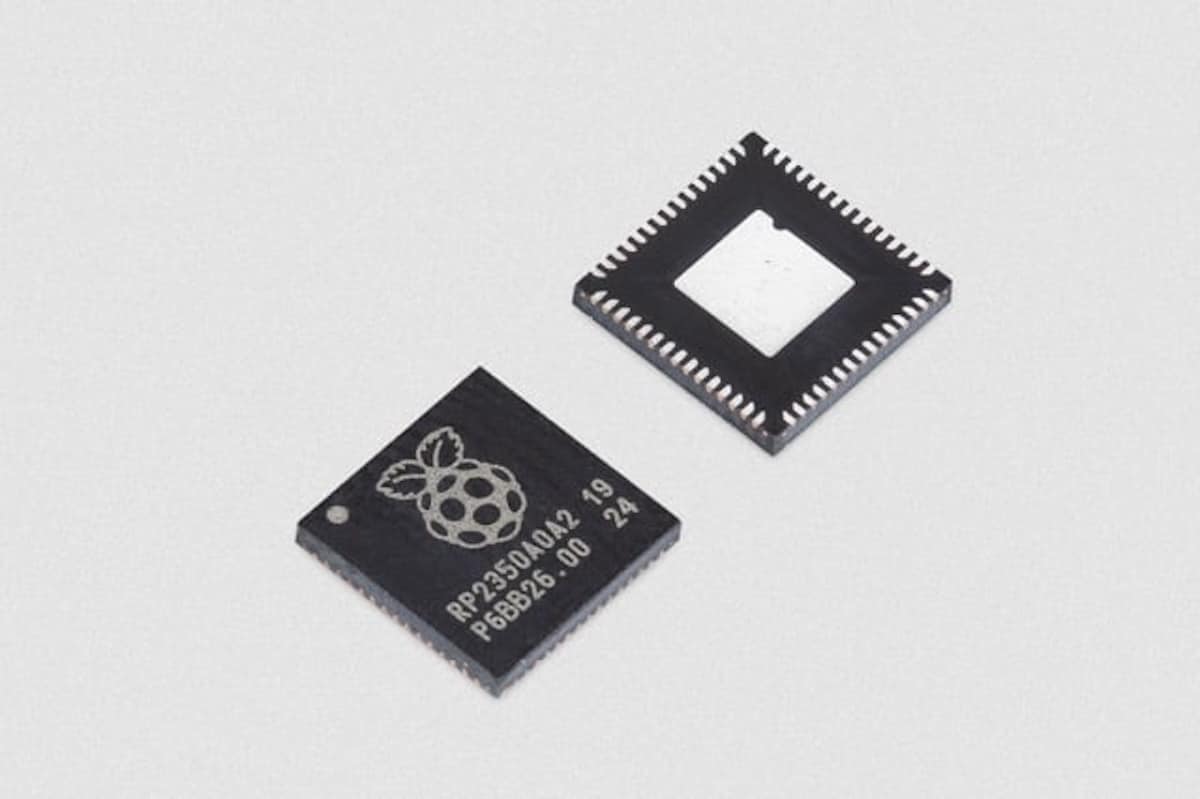Raspberry Pi, known for its popular minicomputers, has made a significant move in the world of microcontrollers by incorporating RISC-V cores in its new Raspberry Pi Pico 2. This decision not only expands the capabilities of the device but also offers developers the opportunity to experiment with an emerging architecture in a stable and well-supported environment.
The heart of innovation: Hazard 3
The RP2350, the chip powering the Raspberry Pi Pico 2, includes RISC-V cores called Hazard 3. These cores were designed by Luke Wren, an engineer at Raspberry Pi, as a personal project. The most notable aspect is that these cores are open-source, allowing anyone interested to download the design files and explore the same technology that will be present in millions of devices worldwide.
A unique and accessible design
Luke Wren, reflecting on his creation, describes Hazard 3 as a 100% original design. It is an evolution of Hazard5, a processor he originally designed for RISCBoy, his open-source game console project inspired by the Game Boy Advance.
“Hazard3 is a production-grade processor that delivers the maximum possible performance within its small area and within the frequency range I expect to see in microcontroller designs,” explains Wren.
Impact on the developer community
Eben Upton, founder of Raspberry Pi, emphasizes the importance of this addition: “By adding Hazard3 to the RP2350, our goal is to provide software developers with the opportunity to experiment with RISC-V architecture in a stable and well-supported environment, and popularize Hazard3 as a clean and open core suitable for literal use in other devices or as a basis for further development.”
Accessibility and open-source
One of the most attractive features of Hazard3 is its open-source nature. Wren emphasizes that anyone can use this processor design in their own chip to run RISC-V code. Additionally, interested parties can try it out on an FPGA board or run the simulator on their own machines, all using open-source tools like yosys, nextpnr, and gtkwave.
The future of RISC-V and Hazard3
Wren is excited about the potential of RISC-V and Hazard3. “RISC-V allows you to perform mad scientist architecture experiments on a clean and standard architecture,” he comments. This approach opens the door to innovations like CHERI, an exciting development in the integrated security space.
The development of Hazard3 continues, with plans for future expansion and a commitment to ongoing maintenance. As Wren points out, it will “never be ‘finished,’ it will simply transition from development to stable versions.”
By incorporating RISC-V cores into the Raspberry Pi Pico 2, the company is not only innovating in the field of microcontrollers but also fostering a more open and accessible development ecosystem, paving the way for future innovations in the field of embedded computing.
Source: Raspberry

